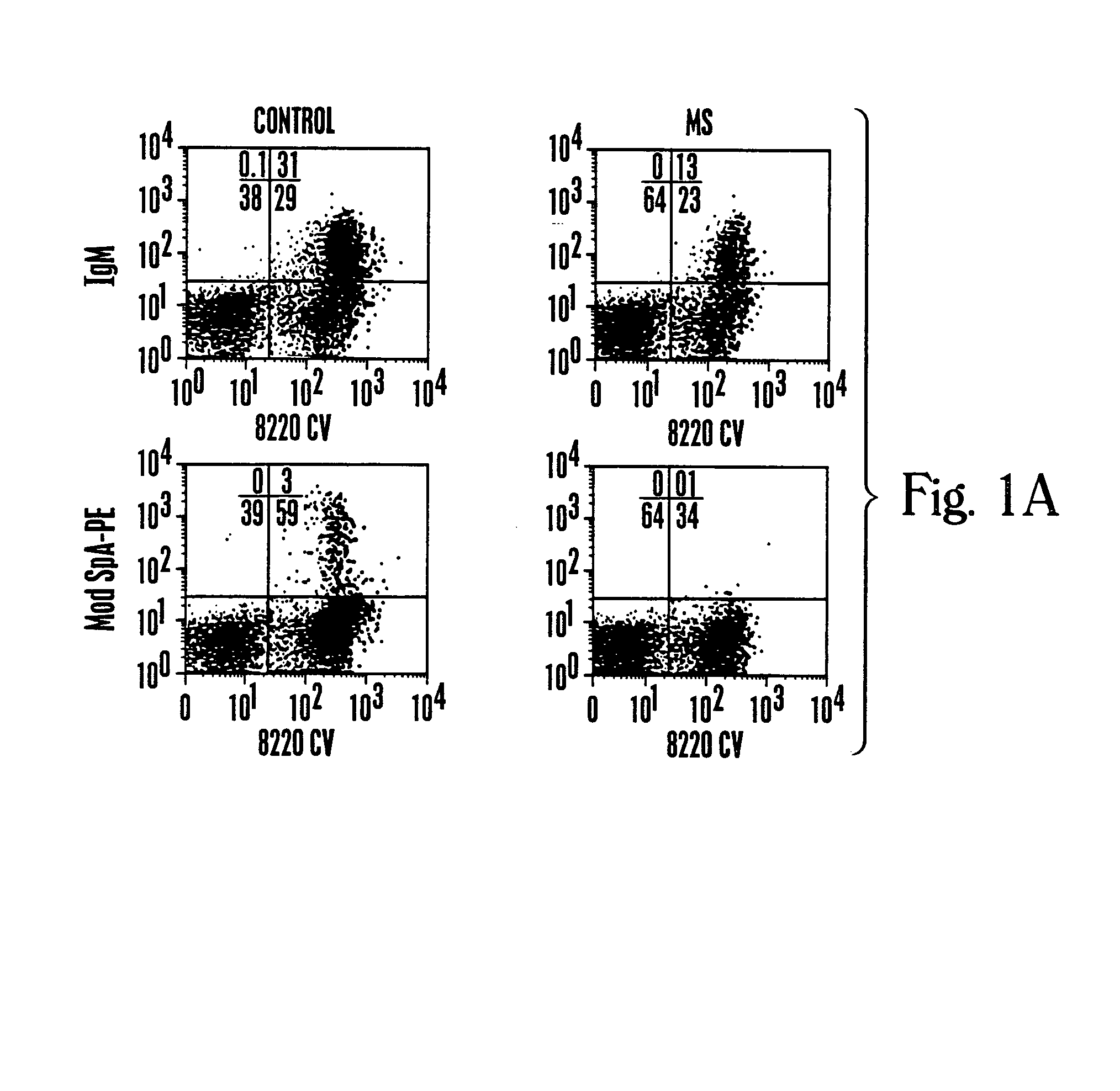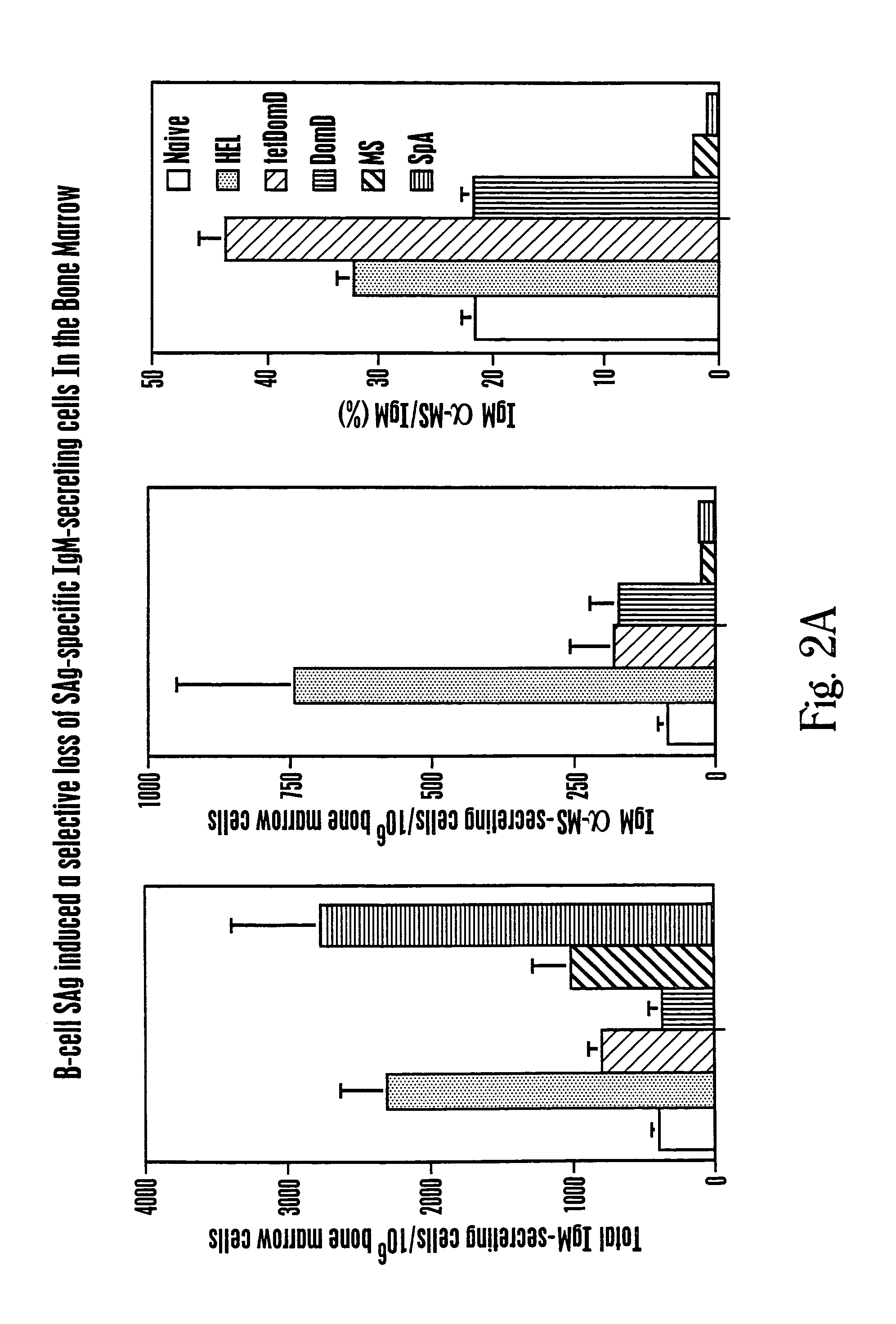Protein A based binding domains with desirable activities
a protein a and binding domain technology, applied in the direction of antibody medical ingredients, peptides/protein ingredients, peptides, etc., can solve the problems of high cost associated with producing sufficient quantities of reagents in mammalian expression systems for therapeutic intervention, less than optimal reagents, etc., to achieve beneficial therapeutic effect on individual health, reduce the number of targeted, effect of reducing the number o
- Summary
- Abstract
- Description
- Claims
- Application Information
AI Technical Summary
Benefits of technology
Problems solved by technology
Method used
Image
Examples
example 1
Measuring IgG Fc and Fab-Specific Binding Activities of Variant SpA Domains
[0077]A variety of dependable in vitro assays are available to evaluate and compare Ig-binding specificities of SpA variants. These include methods for direct and sandwich ELISA, and competitive binding ELISA (57;63;71). Apparent KD can also be determined in an ELISA based method as described previously (57). BIAcore biosensor instrument (Pharmacia) for measurements of surface plasmon resonance (56), for real-time kinetics analysis of Ab-SAg interactions in a label-free mode also have been used previously for SpA. In these studies, SpA derivatives or other SAgs are immobilized on a biosensor chip and the binding of Ig is measured using a direct optical sensing technique based on total internal reflectance. Kinetics software provide binding on and off rates and an accurate characterization of the nature of each interaction (23), as has been recently reported (56;69;71).
[0078]Solution phase interactions between...
example 2
Models for Assessing the In Vivo Consequences of B-Cell Superantigen Exposure
[0083]The superantigen biological effects of SpA variants can be assessed on human lymphocytes using in vitro preparations of human peripheral blood B cells associated with selective expression of VH3 gene rearrangements (35;37). The in vivo effects of SpA variants can be measured in a mouse animal model (68).
[0084]Mice are excellent models for investigations of the in vivo consequences of exposure to a B-cell SAgs, as most aspects of B cell-T cell interactions, and even antigen presentation, are very similar between the human and murine immune systems. Central to these studies, for each of the seven human VH gene segment families, which distribute to each of three VH clans, the mouse also has homologous VH gene segments. In fact, within the 15 known murine VH families, there are at least four murine clan VHIII families, all structurally homologous to human VH3 genes, especially in the FR subdomains, which ...
example 3
Immunodominance of the Fab-binding Site of SpA: Induction of Tolerance after Neonatal Exposure.
[0085]Studies that characterize the outcome of neonatal exposure to MSPA (MS), a chemically modified form of SpA possessing only the clan VHIII-restricted Fab-binding activity have been described (68). MSpA was studied because it is a an oligovalent high avidity Fab-binding form of SpA but it is devoid of the Fc binding activity. In part, these studies addressed the fundamental question of the role of the clan VHIII-restricted Fab binding site for in vivo immune responses to SpA. Within the primary B-cell repertoire of naive adult BALB / c mice, these unconventional BcR-mediated MSPA-binding interactions were detected by flow cytometry for ˜5% of splenic B cells, and by ELISpot with ˜13% of the splenic spontaneous IgM-secreting cells (68).
[0086]The secondary immune responses to MSPA also was evaluated, which occurred in association with antigen-specific T cell responses, and presumably arose...
PUM
| Property | Measurement | Unit |
|---|---|---|
| Fraction | aaaaa | aaaaa |
| Mass | aaaaa | aaaaa |
| Mass | aaaaa | aaaaa |
Abstract
Description
Claims
Application Information
 Login to View More
Login to View More - R&D
- Intellectual Property
- Life Sciences
- Materials
- Tech Scout
- Unparalleled Data Quality
- Higher Quality Content
- 60% Fewer Hallucinations
Browse by: Latest US Patents, China's latest patents, Technical Efficacy Thesaurus, Application Domain, Technology Topic, Popular Technical Reports.
© 2025 PatSnap. All rights reserved.Legal|Privacy policy|Modern Slavery Act Transparency Statement|Sitemap|About US| Contact US: help@patsnap.com



